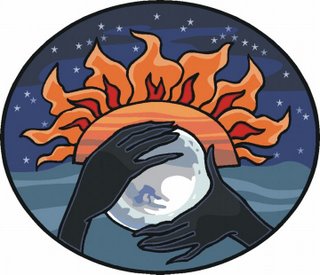
For someone, who is new to Paganism, “Drawing Down the Moon” by Margot Adler can be daunting. Although the author leads the reader through the confusing maze of Pagan groups, she does it in too much detail. The curious reader becomes overwhelmed by the encyclopedic nature of this book. Because Ms. Adler spent too much time encompassing everything Pagan, this reader became lost in all the minutiae.
One of the main points of this book is how chaotic Paganism is. Creativity for many Pagans flourishes in chaos. Few want to be pinned down to a set structure, while others make it up as they go along. Furthermore, many groups borrow from other religious traditions.
For example, I was told that the Church of All Worlds was ‘weird’. After reading “Drawing Down the Moon”, I learned that the inspiration for this group was Robert Heinlein’s “Stranger in a Strange Land”. That became for me, the central point of Ms. Adler’s thesis. In Paganism, you borrow or change whatever you find to create your own religion.
In contrast, ADF was formed to give order and structure to Paganism. The emphasis on the proper order of rituals helps the worshippers understand the sacredness of their religion. Creativity in ADF is tempered with discipline and scholarship. This gives the ordinary Pagan, a foundation on which to further their spiritual practices.
To this reader, “Drawing Down the Moon” is two books. One book is how and why people become Pagans. And then once they do, what their lives are like. The religious impulse to experience ancient mysteries is the main focus of this book.
The second book is an encyclopedia of Pagan groups and trends. It is an historical document on the beginnings of modern Paganism. The references, books to read, and organizations give a starting point on learning about all things Pagan. However this part goes quickly out of date, since Paganism is always mutating. For an historical document, this book is superb. To make it current, I suggest using the Internet to research the various groups listed in the book.
“Drawing Down the Moon” can be taxing for the general reader. Reading over 400 pages is daunting, since so much detail is thrown at the reader. Anyone serious about knowing everything about Paganism would benefit from this book. What I is gleamed from reading this book that not only does Paganism mutates, but it is also in constant flux. Chaos is the watchword. Unfortunately, for people seeking a fundamental grasp of Paganism, the book loses them in the details.

